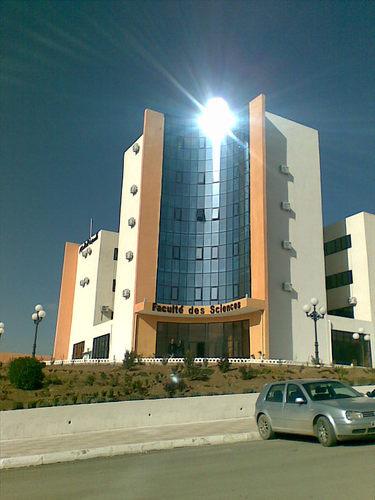|
| Titre : |
Toward Advanced Deep Learning Techniques for Medical Image Analysis |
| Type de document : |
document ÃĐlectronique |
| Auteurs : |
Ayoub Laouarem, Auteur ; Semcheddine,Moussa, Directeur de thÃĻse |
| Editeur : |
SÃĐtif:UFA1 |
| AnnÃĐe de publication : |
2024 |
| Importance : |
1 vol (153 f.) |
| Format : |
29 cm |
| Langues : |
Anglais (eng) |
| CatÃĐgories : |
ThÃĻses & MÃĐmoires:Informatique
|
| Mots-clÃĐs : |
Informatique |
| Index. dÃĐcimale : |
004 - Informatique |
| RÃĐsumÃĐ : |
Deep learning (DL) has revolutionized medical diagnosis by enabling the analysis of diverse data
modalities, particularly medical images, from a wide range of sources. This transformative capability
has made DL approaches an increasingly vital tool in modern healthcare. Indeed, the potential of DL
in medical image analysis is undeniably promising, with significant advancements already being made.
However, only a few DL-based approaches have successfully transitioned into clinical practice. This
may be due to various factors such as overfitted models, selection bias, and the extensive preprocessing
of datasets, which fail to accurately represent clinical diversity and local variations.
This thesis aims to explore the transformative potential of DL in medical image analysis, focusing
on the development of novel models that enhance diagnostic accuracy, efficiency, and personalization.
In this thesis, we address several key medical imaging modalitiesâX-rays, computed tomography
(CT) scans, optical coherence tomography (OCT), and dermatoscopic imagingâto tackle critical
diagnostic challenges in diseases such as COVID-19, retinal disorders, and skin lesions. This work
offers a thorough exploration of advanced DL architectures and hybrid methodologies tailored for
medical diagnostics. The first contribution underscores the effectiveness of attention mechanisms
in achieving high-accuracy diagnoses for COVID-19 and other pulmonary diseases. Specifically,
the integrated attention mechanisms resulted in notable improvements, with quantified performance
metrics indicating high sensitivity and precision as high as 99% in COVID-19 diagnosis. The second
introduces HTC-Retina, a cutting-edge hybrid approach that combines vision transformers (ViTs)
with convolutional neural networks (CNNs). This approach, applied to OCT image classification,
showed enhanced performance in identifying retinal disorders, with significant improvements in
accuracy over traditional methods, achieving classification rates ranging from 97% to 99%. The third
presents JILDYA-Net, a novel lightweight model optimized for skin lesion classification. This model
employs an efficient architecture designed for resource-constrained clinical settings. It was evaluated
on dermatoscopic images and demonstrated superior classification accuracy. The final contribution is
the development of DA-UNet-Plus, a novel hybrid segmentation model. Initially applied to detect
intraretinal fluid in OCT images with notable performance, DA-UNet-Plus was later adapted for skin
lesion localization in dermatoscopic images, achieving improved lesion boundary delineation.
Overall, these contributions demonstrate the powerful potential of DL in automating complex
diagnostic tasks and fostering personalized healthcare while paving the way for future innovations in
medical image analysis. |
| Note de contenu : |
|
| Côte titre : |
DI/0082 |
Toward Advanced Deep Learning Techniques for Medical Image Analysis [document ÃĐlectronique] / Ayoub Laouarem, Auteur ; Semcheddine,Moussa, Directeur de thÃĻse . - [S.l.]Â : SÃĐtif:UFA1, 2024 . - 1 vol (153 f.) ; 29 cm. Langues : Anglais ( eng)
| CatÃĐgories : |
ThÃĻses & MÃĐmoires:Informatique
|
| Mots-clÃĐs : |
Informatique |
| Index. dÃĐcimale : |
004 - Informatique |
| RÃĐsumÃĐ : |
Deep learning (DL) has revolutionized medical diagnosis by enabling the analysis of diverse data
modalities, particularly medical images, from a wide range of sources. This transformative capability
has made DL approaches an increasingly vital tool in modern healthcare. Indeed, the potential of DL
in medical image analysis is undeniably promising, with significant advancements already being made.
However, only a few DL-based approaches have successfully transitioned into clinical practice. This
may be due to various factors such as overfitted models, selection bias, and the extensive preprocessing
of datasets, which fail to accurately represent clinical diversity and local variations.
This thesis aims to explore the transformative potential of DL in medical image analysis, focusing
on the development of novel models that enhance diagnostic accuracy, efficiency, and personalization.
In this thesis, we address several key medical imaging modalitiesâX-rays, computed tomography
(CT) scans, optical coherence tomography (OCT), and dermatoscopic imagingâto tackle critical
diagnostic challenges in diseases such as COVID-19, retinal disorders, and skin lesions. This work
offers a thorough exploration of advanced DL architectures and hybrid methodologies tailored for
medical diagnostics. The first contribution underscores the effectiveness of attention mechanisms
in achieving high-accuracy diagnoses for COVID-19 and other pulmonary diseases. Specifically,
the integrated attention mechanisms resulted in notable improvements, with quantified performance
metrics indicating high sensitivity and precision as high as 99% in COVID-19 diagnosis. The second
introduces HTC-Retina, a cutting-edge hybrid approach that combines vision transformers (ViTs)
with convolutional neural networks (CNNs). This approach, applied to OCT image classification,
showed enhanced performance in identifying retinal disorders, with significant improvements in
accuracy over traditional methods, achieving classification rates ranging from 97% to 99%. The third
presents JILDYA-Net, a novel lightweight model optimized for skin lesion classification. This model
employs an efficient architecture designed for resource-constrained clinical settings. It was evaluated
on dermatoscopic images and demonstrated superior classification accuracy. The final contribution is
the development of DA-UNet-Plus, a novel hybrid segmentation model. Initially applied to detect
intraretinal fluid in OCT images with notable performance, DA-UNet-Plus was later adapted for skin
lesion localization in dermatoscopic images, achieving improved lesion boundary delineation.
Overall, these contributions demonstrate the powerful potential of DL in automating complex
diagnostic tasks and fostering personalized healthcare while paving the way for future innovations in
medical image analysis. |
| Note de contenu : |
|
| Côte titre : |
DI/0082 |
|

